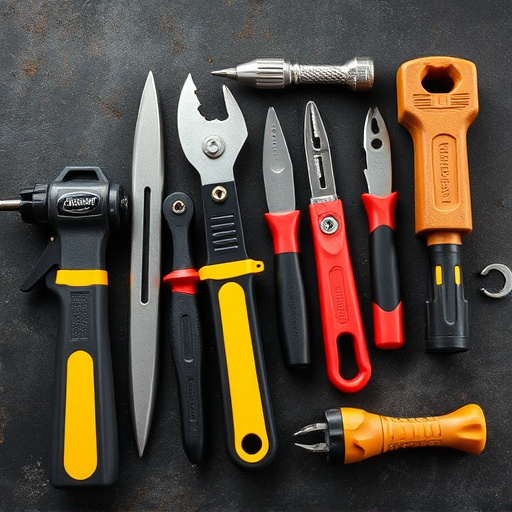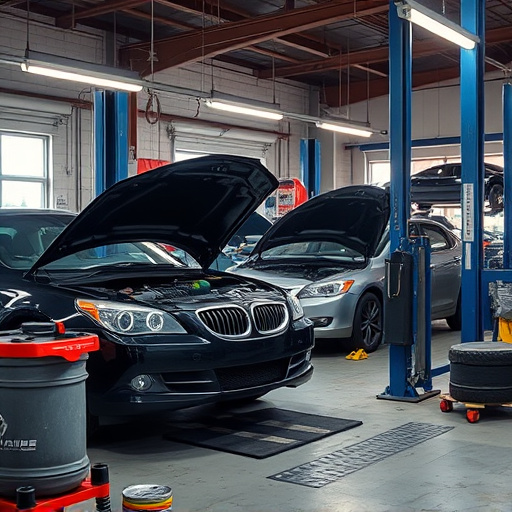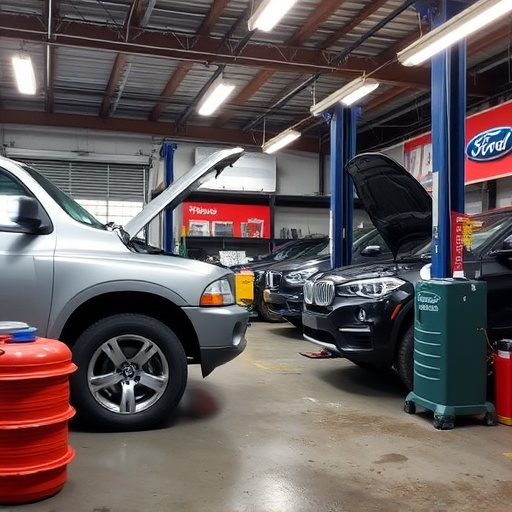Computerized Frame Measurement: Boosting Repair Accuracy Efficiency

Computerized frame measurement tools revolutionize vehicle restoration and collision repair by provi…….
Computerized frame measurement, a cutting-edge technology, is transforming industries by offering unprecedented precision and efficiency in dimensional analysis. This innovative process leverages advanced computer systems and specialized software to accurately measure and document various objects, from complex machinery to intricate architectural structures. By automating what was once a time-consuming manual task, computerized frame measurement promises improved productivity, reduced errors, and enhanced quality control across multiple sectors. In this comprehensive article, we will delve into the intricacies of this technology, explore its global impact, and examine its potential to shape industries in profound ways.
Computerized frame measurement is a process that utilizes computer-aided measurement (CAM) software and high-precision sensors to capture and analyze dimensional data of objects or structures. It involves creating a digital template or ‘frame’ around the subject, which serves as a reference point for accurate measurements. The core components include:
The concept of computerized frame measurement has its roots in traditional dimensional inspection techniques used since the Industrial Revolution. Early methods relied on human measurement with calipers, rules, and micrometers. However, these manual processes were time-intensive, prone to errors, and lacked the precision required for modern manufacturing standards.
In the late 20th century, technological advancements in computer hardware and software laid the foundation for computerized frame measurement. The development of CAD (Computer-Aided Design) systems and subsequent CAM software enabled digital representation and manipulation of objects. The integration of high-precision sensors further enhanced the accuracy and efficiency of dimensional analysis. Today, this technology is a cornerstone of modern quality control and product development across diverse industries.
Computerized frame measurement has made significant inroads globally, with its adoption driven by the need for increased productivity, quality, and compliance with international standards. However, there are notable regional disparities in its implementation:
| Region | Adoption Rate (%) | Key Industries | Challenges |
|---|---|---|---|
| North America | 75 | Automotive, Aerospace | High initial investment, skilled labor requirements |
| Europe | 60 | Manufacturing, Construction | Regulatory compliance, data privacy concerns |
| Asia Pacific | 80 | Electronics, Automotive | Rapid technological integration, cost-effective solutions |
| Middle East & Africa | 40 | Oil & Gas, Infrastructure | Limited access to technology, skill development needs |
Several global trends are driving the evolution and adoption of computerized frame measurement:
The computerized frame measurement market has experienced steady growth, driven by the increasing demand for precision manufacturing, product quality, and international trade standards. According to a recent report by ResearchAndMarkets, the global market size was valued at USD 2.5 billion in 2021 and is projected to grow at a CAGR of 7% from 2022 to 2030.
The market attracts significant investments from both technology providers and end-users, particularly in industries with high-precision requirements. Key players include:
The economic implications of computerized frame measurement are substantial:
The field of computerized frame measurement has witnessed several technological breakthroughs that have revolutionized its capabilities:
As technology continues to evolve, the future of computerized frame measurement holds immense promise:
The implementation of computerized frame measurement is influenced by various policies and regulations, ensuring quality, safety, and ethical standards:
Compliance with policies and regulations is crucial for the successful adoption of computerized frame measurement:
Despite its numerous advantages, computerized frame measurement is not without challenges:
Addressing these challenges requires a multi-faceted approach:
A leading automotive manufacturer sought to enhance the quality control of its complex engine components. By implementing computerized frame measurement with high-resolution 3D scanners and advanced software, they achieved:
A major aerospace company faced challenges meeting stringent industry standards for critical aircraft components. Computerized frame measurement with optical gages and laser scanners enabled them to:
A global construction firm embarked on a digital transformation project, utilizing computerized frame measurement for creating digital twins of their large-scale infrastructure projects. The results included:
The future of computerized frame measurement is filled with exciting possibilities:
To capitalize on these trends, industries should:
Computerized frame measurement has emerged as a game-changer, transforming industries by offering unprecedented precision, efficiency, and quality control. From manufacturing and construction to aerospace and healthcare, its impact is profound and far-reaching. As technology continues to advance, this field will play an increasingly vital role in shaping the future of global supply chains, product development, and economic competitiveness.
By embracing computerized frame measurement, industries can navigate complex challenges, embrace emerging trends, and drive innovation. The journey ahead promises exciting possibilities, with continued technological advancements, standardized protocols, and a growing global network of practitioners. As we delve deeper into the digital age, this technology will undoubtedly leave its indelible mark on various sectors, fostering efficiency, quality, and growth worldwide.
Q: How does computerized frame measurement differ from traditional manual measurement?
A: Traditional methods rely on human operators using tools like calipers and rulers, which are time-consuming, error-prone, and limited in precision. Computerized frame measurement automates these processes, providing faster, more accurate results with advanced sensors and software.
Q: What industries benefit the most from this technology?
A: Industries such as automotive, aerospace, electronics manufacturing, construction, medical device production, and quality control in various sectors stand to gain significantly from computerized frame measurement due to their high-precision requirements and global standards.
Q: Can you explain the role of AI in computerized frame measurement?
A: Artificial intelligence enhances measurement processes by automating object detection, orientation, and defect identification. It optimizes inspection strategies, predicts defects, and ensures consistent quality, improving overall efficiency.
Q: Are there any regional disparities in adopting this technology?
A: Yes, initial adoption rates vary globally due to factors like investment costs, skilled labor availability, regulatory environments, and industry-specific needs. However, as technology becomes more accessible and affordable, these disparities are expected to narrow.
Q: How does computerized frame measurement contribute to supply chain optimization?
A: It streamlines global trade by ensuring compliance with international standards, reducing disputes, and enhancing supply chain visibility. Accurate measurements improve product quality, minimize returns, and foster stronger market positions for manufacturers.

Computerized frame measurement tools revolutionize vehicle restoration and collision repair by provi…….

Computerized Frame Measurement (CFM) revolutionizes vehicle restoration by providing precise data-dr…….

Computerized Frame Measurement (CFM) revolutionizes car body repair, providing precise scans and det…….

Computerized frame measurement technology is transforming car damage repair, offering unprecedented…….

Computerized frame measurement technology transforms industries like automotive collision repair and…….

Computerized frame measurement systems transform traditional manual inspections in workshops by mini…….

Computerized frame measurement reports provide critical dimensions and readings for automotive profe…….

Computerized frame measurement systems revolutionize automotive repair by eliminating human error an…….

Computerized frame measurement software revolutionizes collision repair and automotive body work wit…….

Traditional manual measurement methods remain vital in auto repair for dynamic assessment and cost-e…….